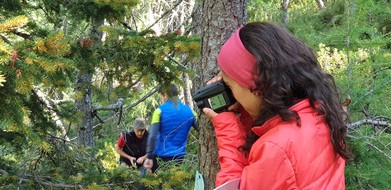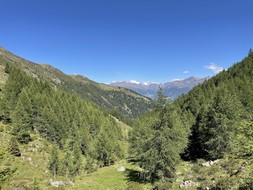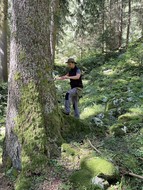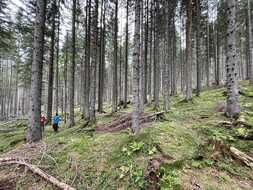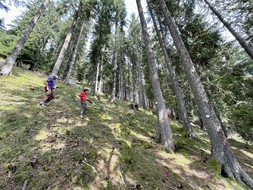REINFORCE
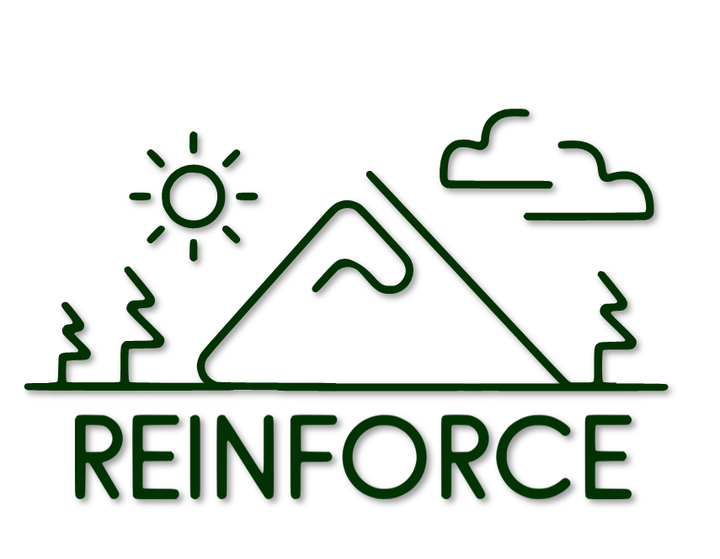
Project duration
2021 - ongoing
Project overview
REINFORCE: INtegrated landscape management for REsilient mountain FORests under global changes
Forests are key components of modern landscapes, providing essential ecosystem services to humans and sustaining biodiversity. Assuring future forest resilience through sustainable management practices is one of the main priorities of the EU policy. However, forests are projected to undergo dramatic compositional and structural shifts prompted by global changes, such as intensifying natural disturbance regimes, land use and climate change, making planning for forest management exceptionally difficult. Nowadays, new interdisciplinary approaches are needed for understanding and implementing tailored adaptation actions to increase forest resilience to a large set of uncertainties.
The overall aim of REINFORCE is to study multi-scale and integrated forest management strategies to enhance resilience to global changes in European mountain forest landscapes. The project aims at assessing future forest landscape dynamics in multiple case study regions in the Alps using advanced simulation modelling tools. Evaluation of resilience-based forest management adaptations follows an innovative approach combining dynamic landscape modelling with the principles of functional diversity and network analysis. This would allow to determine where to intervene more efficiently within forested landscapes so to maximize their resilience to sudden disturbances and climate change. Mixing multiple expertise and methods, REINFORCE also aims at filling the gap between science and local decision-makers by incorporating stakeholder community in building effective and integrated forested landscape management to cope with climate and global changes.
The project follows three main research steps:
- Assessing: evaluate future forest landscapes scenarios under uncertain global changes.
- Planning: evaluate novel forest management plans to foster resilience to uncertain global changes.
- Reinforcing: build integrated forest landscape management plans tailored and adapted to regional and local needs.

Methods and study areas
We study forest stand and landscape dynamics in the Eastern Alps, particularly those surrounding the Trentino/South Tyrol region in Italy. As specific case studies, we focused on the Vinschgau/Venosta valley, the Stubai valley in Austria and the Val D’Ega/Val di Fiemme (upcoming!). We also selected a number of representative forest stands representaive for multiple forest types across South Tyrol, in conjunction with the special project BMS-FOREST.
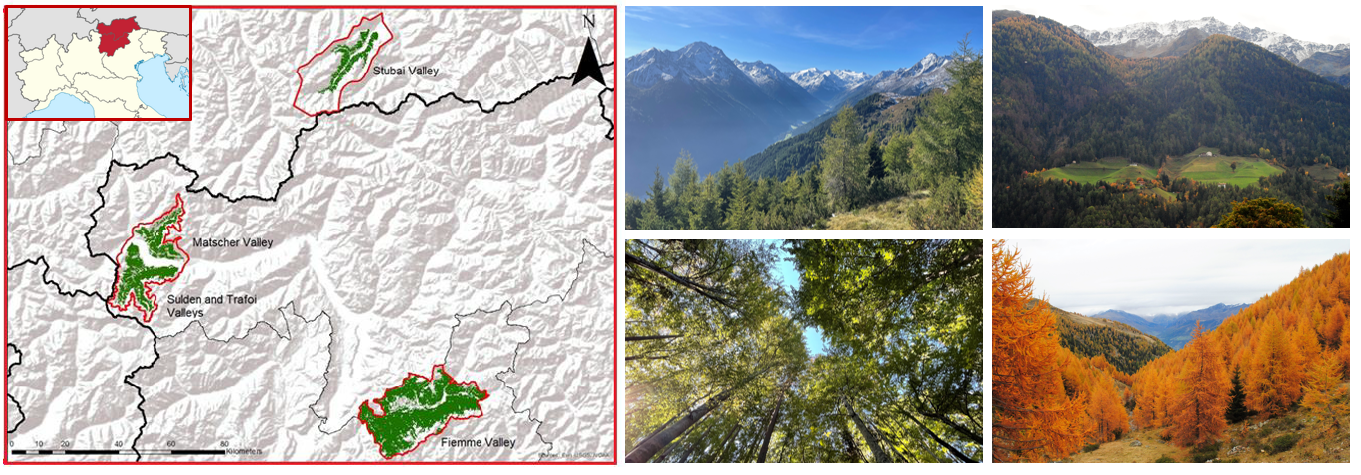
We mainly work with the individual-based forest landscape and disturbance model iLand, a process-based model of the primary demographic processes in forest ecosystems (i.e. growth, mortality, and regeneration of trees). iLand simulates resource availability at the landscape scale in a spatially-explicit manner, integrating local resource competition and physiological resource use. It also integrates an agent-based model of forest management to dynamically address the interactions between forests and managers as coupled human and natural systems, as well as multiple disturbance agents (e.g., wind disturbance, bark beetle, wildfire, biotic disturbances). The model has been developed and maintained by the professorship for Ecosystem Dynamics and Forest Management at TU Munich.
We also work with the forest stand model ForClim, a climate-sensitive forest succession (“gap”) model developed to simulate forest stand dynamics over a wide range of environmental conditions. In ForClim, establishment, growth, competition and mortality of trees are simulated on small areas (‘patches’) using only a minimum of ecological assumptions to capture the influence of climate and ecological processes on long-term forest dynamics. The model has been tested comprehensively for the representation of natural forest dynamics of temperate forests of the Northern Hemisphere, with an emphasis on European and Alpine mountain forests. It has been developed and maintained by the professorship for Forest Ecology at ETH Zurich.
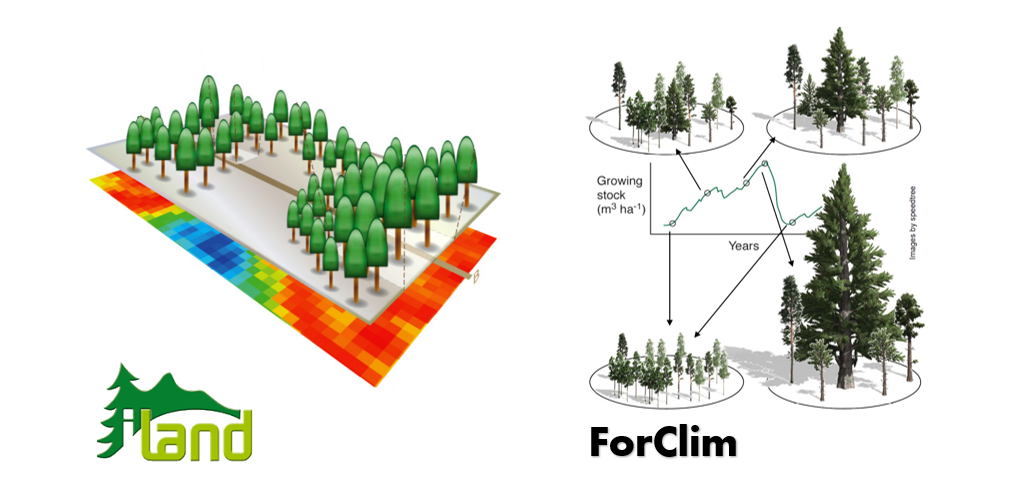
Funding
The project is financed from the European Union’s Horizon 2020 research and innovation programme under the Marie Skłodowska-Curie grant agreement No 891671 awarded to Marco Mina (MSCA-IF-2019) and coordinated by Eurac Research in Bolzano/Bozen, South Tyrol, Italy.

Project team and collaborators
- Marco Mina Eurac Research, Italy Project manager
- Erich Tasser Eurac Research, Innsbruck University, Austria Vice project manager
- Nikolaus Obojes Eurac Research
- Katharina Albrich Natural Resource Institute Finland (Luke)
- Alice Crespi Eurac Research
Current students
- Sebastian Marzini Eurac Research / Free University of Bolzano - PhD student (Topic: Forest landscape modelling, treeline dynamics and adaptive forest management)
- Matteo Gecchelin University of Innsbruck - MSc student (Topic: Species distribution modelling under climate change in South Tyrol)
Former students and interns
- Laurin Hillebrand University of Innsbruck - MSc student (Topic: Assessing the protective functions of South Tyrol forests under future climate change)
- Francesca Eccher Free University of Bolzano - MSc student (Topic: Forest stand modelling on drought-prone forests in South Tyrol)
The project is run in cooperation with the Forest Planning Office of the Autonomous Province of South Tyrol
In memoria di Giustino Tonon †
Key publications
Hillebrand L, Marzini S, Crespi A, Hiltner U and Mina M (2023). Contrasting impacts of climate change on protection forests of the Italian Alps. Frontiers in Forests and Global Change 6 1240235.
Suárez-Muñoz M, Bonet-García F, Navarro-Cerrillo RM, Herrero J, and Mina M (2023). Forest management scenarios drive future dynamics of Mediterranean planted pine forests under climate change. Landscape Ecology 38, 2069–2084.
Mina M, Messier C, Duveneck M, Fortin MJ and Aquilué N (2022). Managing for the unexpected - Building resilient forest landscapes to cope with global change. Global Change Biology. 28, 4323– 4341.
Impressions from fieldwork in the Alps (summers 2021-2022)
